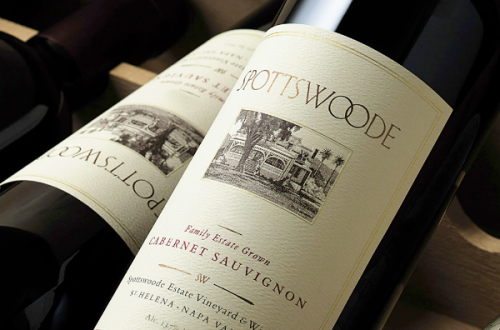
Is Red or White Wine Sweeter?
Having a sweet tooth when you’re a wine drinker can make it tough to decide which wine variety is right for you. With a collection of dry pinot grigios to ultra-sweet dessert red wines, finding your signature wine can be challenging.
While many may initially think that white wines are sweeter than bold reds due to the initial sweet taste of white grapes, the truth is that there are several deciding factors beyond the initial grape varietal that decide the sweetness of the wine.
To help you decide whether you should opt for a sweet or dry bottle, we’ve created this complete guide to red vs white wine and explain what determines wine sweetness, so you can make a well-informed decision when finding your ideal alcoholic beverage.
What Determines Wine Sweetness?
The main things that decide wine sweetness are tannin concentration, alcohol content and acidity. Any residual sweetness you can taste when you sip a glass of Cabernet Sauvignon or Chardonnay is determined by how much sugar is left in the wine after fermentation.
Tannins are natural compounds in grape skins, stems and seeds that give a glass of wine its signature bitter taste. The more tannins in the wine, the more bitter the wine will taste. The acidity will also detract from wine sweetness and typically give a wine a crisp profile.
Pinot grigio, dry Riesling, and Sauvignon Blanc white wines are typically less sweet than other options due to the high acidity levels in these beverages. The length of fermentation and resulting alcohol content will also determine wine sweetness.
The fermentation process uses yeast that consumes sugar and converts it into alcohol. The more sugar consumed by the yeast and converted into alcohol, the higher the alcohol content and bitterness of the wine. If the yeast hasn’t consumed all of the sugar during the fermentation process, you can expect to drink a sweeter and softer glass of wine.
Is There a Sweetness Scale With Wine?
When it comes to classifying wine sweetness and deciding whether red or white offers a sweeter taste, wine enthusiasts can use what is known as a sweetness chart or scale.
This scale determines the amount of residual sugar left over after the fermentation process. Retailers will classify their wines using this scale, so make sure you look out for the classification name when you’re trying to choose a sweet bottle of wine. Here’s a guide to the sweetness scale:
Dry/Extra Dry: Dry wine is any beverage with little to no residual sugar after fermentation. Typically, these drinks have less than a gram of sugar per litre, so drinkers can expect a crisp and refreshing taste best paired with dishes like fish, vegetables and other savoury food. Some examples of extra dry red and white wines include a bottle of MCA Cuvee Paso Robles from Ledge Vineyards or a bottle of Bien Nacido Chardonnay.
Off-dry/Dry: Off-dry wines aren’t quite as bitter as the lower end of the scale but still have very little sugar (typically between 1-2 grams.) Drinkers may still find a sweeter taste and may pair this type of wine with more versatile meals.Medium-dry: Medium-dry offers around 2-4 grams of sugar, so these types of wines have a little more noticeable sweetness. However, these wines still have a lot of acidity in their body, so it’s still a suitable pairing drink for savoury foods.
Medium-sweet: A medium-sweet wine, like certain types of Roses, has a noticeably sweet taste. While not as much as a dessert red wine, medium sweet wines still offer a perfect drink for anyone with a sweet tooth, or as a lighter pairing for a dessert.
Sweet: A sweet wine is any wine with over 12 grams per litre and has a very bold, sweet taste. Usually, sweet wines like ice wine are best paired with desserts and cheeses with a rich flavour to balance out and compliment the sweetness.

What Factors Impact Wine Sweetness?
Alongside tannins, acidity and alcohol content, some other variables will determine whether red or white wine is sweeter. Here’s a guide to just a few:
1. Climate
The climate will have a significant impact on how sweet a wine is. White wines in warmer regions like Rioja in Spain or Argentina typically offer a sweeter taste, as the heat causes grapes to ripen faster. You’ll typically find that more red wines originate from these types of climates, so there is an argument that red wine could be considered sweeter than white.
However, there are red wines produced in extremely cold climates that offer a very sweet taste. Take red ice wine, for example. This wine is produced using frozen grapes, so the sugars don’t dissolve during the fermentation process. With this in mind, it’s important not to take climate on its own as an indicator of wine sweetness.
2. Age
Age will also significantly impact the sweetness of the wine as acids begin to break down over time, increasing sugar concentration. You’ll typically find that red wines left to age for lengthy periods will result in a sweeter taste.
White wine, on the other hand, will usually get more bitter over time due to oxidation. As they lose their freshness and fruity flavour, drinkers can expect a more acidic drink to pair with their meals.
Red vs. White, Which is Sweeter?
Considering the deciding factors of red or white sweetness, it can be easy to argue that both wines have the potential to be either very sweet or very dry. While white wine grapes tend to have more natural sugars and are fermented at cooler temperatures, the techniques in which red wine is produced mean that signature sweet reds like port offer drinkers a dessert in a bottle.
That means there are simply too many variables to make a concrete decision about which wine type is sweeter than the other. The good news is that there is a whole spectrum of sweetness that wine drinkers can choose from, meaning they can enjoy both dry whites and super sweet reds to try and find their favourite type.
Shop High-Quality Wines From Your Go-To Online Wine Retailer, Wine Online
If you want to conduct your own experiment to see whether white or red wine is sweeter, then why not shop at Wine Online? Wine Online is your one-stop shop for all your wine needs and offers a bottle for every single wine preference.
We provide a wide range of wines, from classic and budget friendly house wines, such as a dry bottle of white Hacienda Lopez De Haro Blanco, to collection-worthy iconic beverages like a bottle of 2009 red Chateau Palmer.
At Wine Online, we deliver incredible wines straight to your door, so you don’t need to lift a finger to get your hands on an incredible bottle of wine. Shop online today to find out your sweet wine preference.





